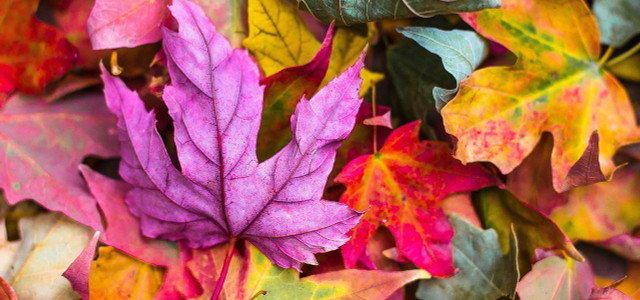Most people associate fall colors with the changing of the leaves, but some of the most stunning shades actually come from autumn flowers. We'll take a look at some of the most beautiful native fall-blooming flowers.
The best gardens are well thought out and involve flowers with bloom times ranging from spring to fall. Not only will this ensure a colorful garden all throughout the year, it also gives pollinators plenty to eat. In order to make your garden as inviting as possible, we’ve put together a list of stunning autumn flowers that are native to North America. Imported varieties are beautiful, but native insects and animals prefer native plants. Let’s take a look at some gorgeous fall-blooming flowers.
Read more: 11 Flowering Bushes and Shrubs to Bring Birds and Insects to Your Garden
1. Brown-Eyed Susan: Classic Autumn Flower
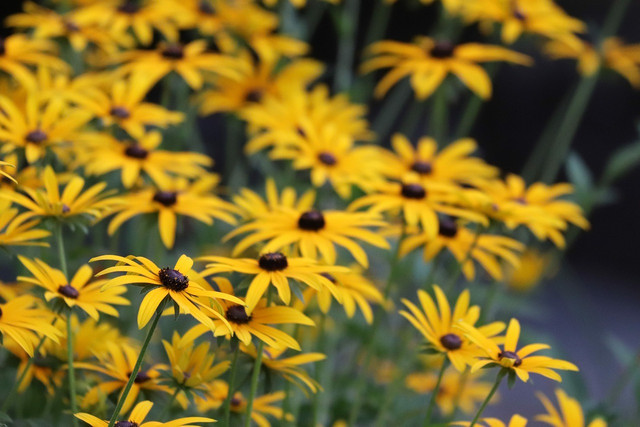
(Foto: CC0 / Pixabay / mari_di_ann)
- Latin Name: Rudbeckia triloba
- Zones: 4 to 9
- Height: up to 5′ tall
- Spread: up to 4′ wide
- Bloom Time: mid-summer until October
- Exposure: full to partial sun
These cheery yellow blooms look like a cross between a daisy and a sunflower and are incredibly easy to grow. Brown-Eyed Susans make a stunning addition to autumn bouquets, or you can let them grow wild in your yard. It’s a self-sowing perennial, native to the prairies of eastern and Midwestern U.S.
2. Blue Prairie Sage: A Delicate Fall Bloomer
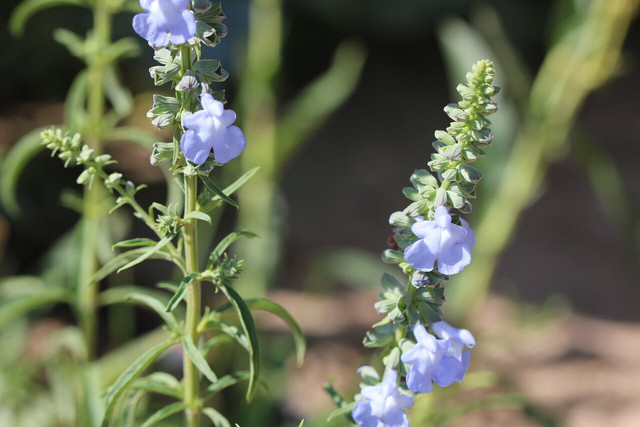


(Foto: CC0 / Flickr / M. Kersten)
- Latin Name: Salvia azurea
- Zones: 5 to 9
- Height: 3 to 4′ tall
- Spread: up to 2′ wide
- Bloom Time: late summer/early fall until first frost
- Exposure: full sun
This delicate periwinkle/blue autumn flower belongs to the salvia family and is native to the prairies of the central U.S. It’s a hardy plant, able to withstand the winters of zone 5 and even the heat of desert summers. Butterflies and other pollinators love the musky scent, while deer will steer clear.
3. Purple Coneflower
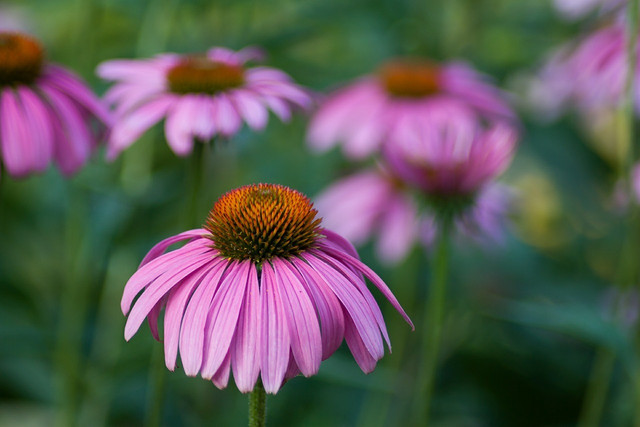


(Foto: CC0 / Pixabay / shawnaller)
- Latin Name: Echinacea purpurea
- Zones: 4 to 9
- Height: up to 5′ tall
- Spread: up to 2′ wide
- Bloom Time: summer through until first frost
- Exposure: full to partial sun
These stunning pink/purple flowers are a joy to have in any garden. Not only do pollinators love them, but they bloom all summer through until the first frost. The purple coneflower plant is native to the eastern United States and makes an excellent backdrop plant due to its height. Once the summer blooms are looking spent, simply cut the plant back by one-third and they will regenerate more blossoms in the fall.
Read more: Natural Home Remedies for Colds: 7 Easy Recipes
4. Frost Asters: Hearty Autumn Flowers
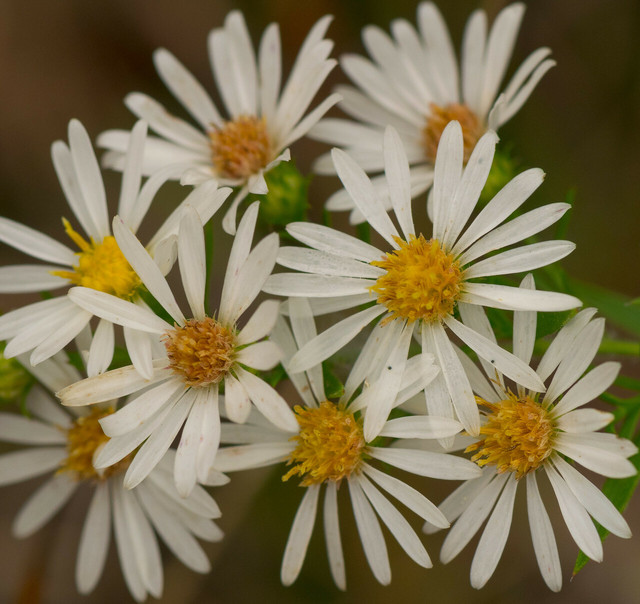


(Foto: CC0 / Flickr / Joshua Mayer)
- Latin Name: Symphyotrichum pilosum
- Zones: 3 to 9
- Height: 2-4′ tall
- Spread: 2-4′ tall
- Bloom Time: September/October
- Exposure: full to partial sun
These types of fall-blooming flowers are native to central and eastern North America and are aggressive self-seeders, so you’ll want to stay on top of it if you don’t want it taking over your yard. This plant is also sometimes called hairy white oldfield aster.
5. Sneezeweed
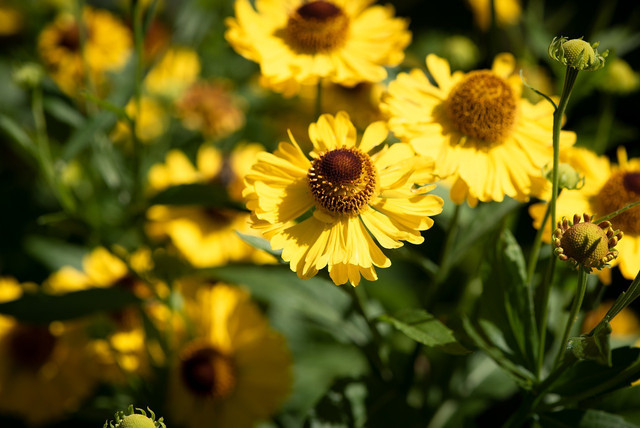


(Foto: CC0 / Pixabay / Pezibear)
- Latin Name: Helenium automnale
- Zones: 3 to 9
- Height: 4′ tall
- Spread: 2′ wide
- Bloom Time: August, September, & October
- Exposure: full to partial sun
Sneezeweed sounds like it might be a nightmare for allergy sufferers, but their pollen is distributed by insects, not wind! This beautiful autumn flower’s native range goes from coast to coast and prefers wetter soil. Due to its later bloom time, insects use these autumn flowers to stock up on the last bits of pollen and nectar before winter comes in.
6. Purple Prairie Clover: Fall-Blooming Flower with Benefits
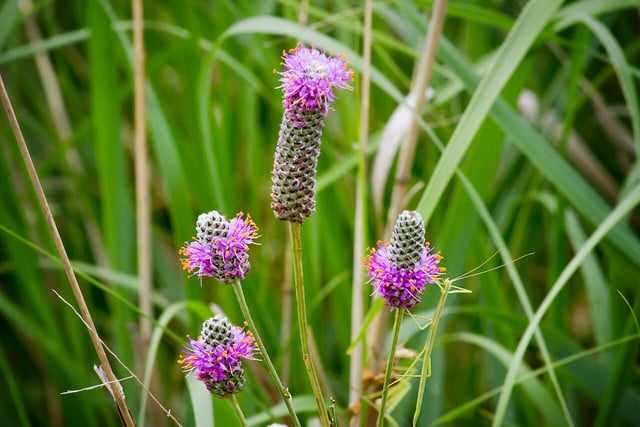


(Foto: CC0 / Flickr / Larry Smith )
- Latin Name: Dalea purpurea
- Zones: 3 to 8
- Height: 2′ tall
- Spread: 1′ wide
- Bloom Time: late summer/early fall
- Exposure: full to partial sun
These unique purple flowers bloom from bottom to top and attract all sorts of pollinators. In fact, they are even listed as a superfood for the Rusty Patched Bumblebee, which is a bee species endemic to North America. Birds love to eat the seeds once the blooms have disappeared, and local fauna can also benefit from the high protein content of purple prairie clover. It’s a fairly drought-resistant plant, so it will be at home nearly anywhere you place it.
Read more: 10 Small Ways to Help Bees That Will Make a Difference
7. Great Blue Lobelia: A Striking Contrast
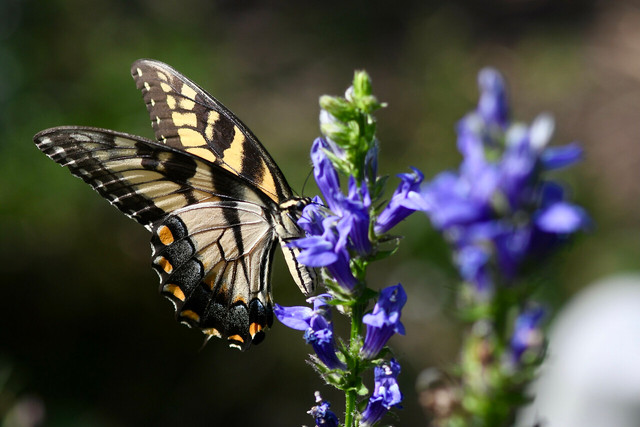


(Foto: CC0 / Flickr / Michele Dorsey Walfred)
- Latin Name: Lobelia siphilitica
- Zones: 3 to 9
- Height: 3′ tall
- Spread: 1.5′ wide
- Bloom Time: mid summer until first frost
- Exposure: full to partial sun
Autumn is filled with warm orange, yellow and red tones, so the deep blue of lobelia offers a striking contrast. It loves wetter soil and will be right at home in marshy areas, soggy meadows, and creekside. Birds, bees, and butterflies all love the large flowery spikes, and so will you!
8. Showy Goldenrod: Spectacular Fall Bloom
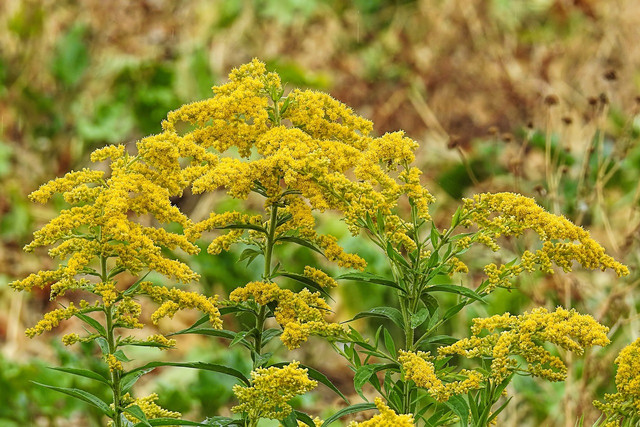


(Foto: CC0 / Pixabay / hansbenn)
- Latin Name: Solidago speciosa
- Zones: 3 to 8
- Height: 5′ tall
- Spread: 3′ wide
- Bloom Time: September through November
- Exposure: full to partial sun
Insects absolutely adore any member of the goldenrod family, since they tend to thrive while the rest of the summer blooms die off. The pollen is actually quite sticky and doesn’t become airborne, so it won’t affect people with sinus issues. These golden feathery plumes make a great addition to any home garden.
9. Obedient Plant: Spring-Like Color in the Fall
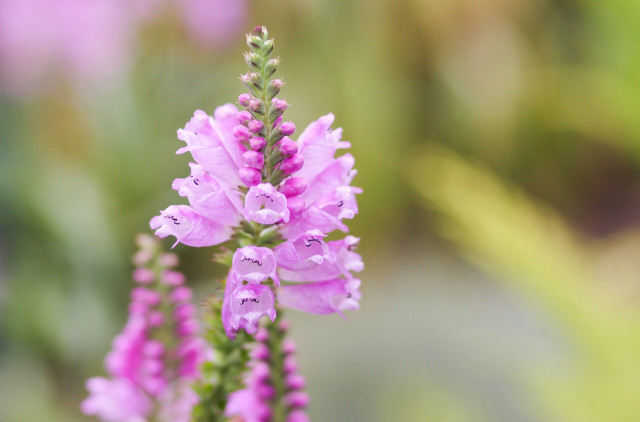


(Foto: CC BY 2.0 / Flickr / Maja Dumat)
- Latin Name: Physostegia virginiana
- Zones: 3 to 9
- Height: 4′ tall
- Spread: 2′ wide
- Bloom Time: August/September
- Exposure: full to partial sun
The Obedient plant is native to nearly two thirds of North America and is beloved by gardeners and pollinators alike. It makes quite a show, which is why these flowers are a great choice if you have space to fill in your garden. A fun fact about this plant is that the flower stems stay in the direction in which you point them. Delicate pink is often reserved for spring and summer plants, so it will make a special addition to your autumn flower scenery.
Read more: How to Dry and Preserve Flowers: 3 Easy Methods
10. Turtle Head: White Autumn Flower
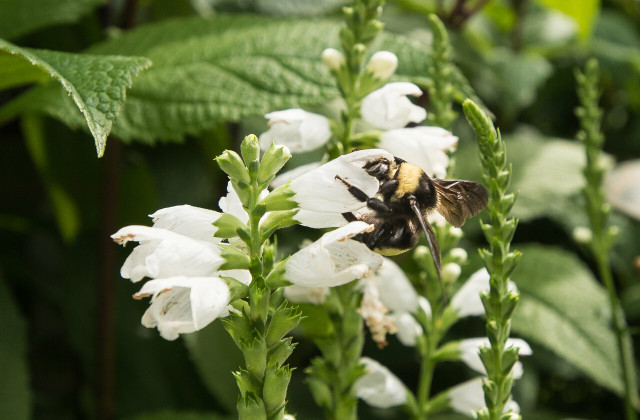


(Foto: CC0 / Flickr / U.S. Department of Agriculture)
- Latin Name: Chelone glabra
- Zones: 3 to 8
- Height: 5′ tall
- Spread: 2′ wide
- Bloom Time: mid-summer until early fall
- Exposure: full sun
Turtle Head is an important fall-blooming flower for the Baltimore Checkerspot butterfly, as it provides plenty of food for the larvae. This plant also attracts a host of other pollinators, including many native species. They thrive in slightly wetter soil, making them an ideal border plant for areas along rivers, streams, and creeks. Plus, a beautiful white flower will go with any other plants you choose to add to your garden.
Read more:
- Companion Planting: A Beginners Guide
- Checklist: How to Prepare Your Garden for Winter
- Best Tea for Colds: These Blends Help Against Cough and Sore Throat
Do you like this post?







